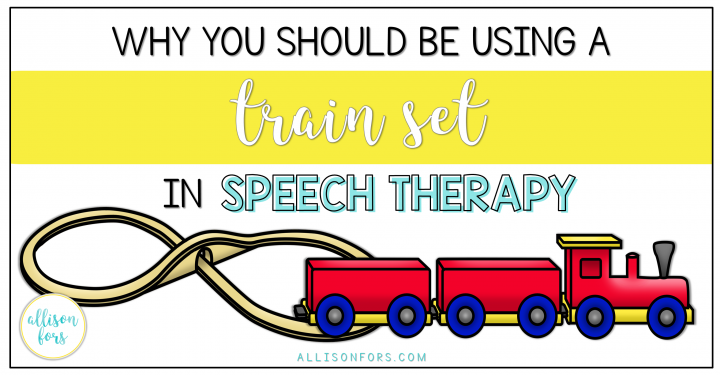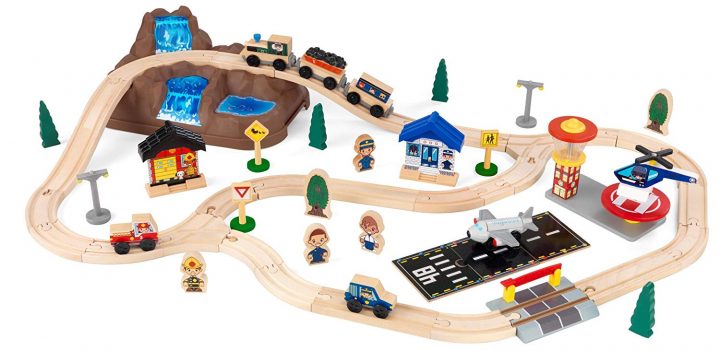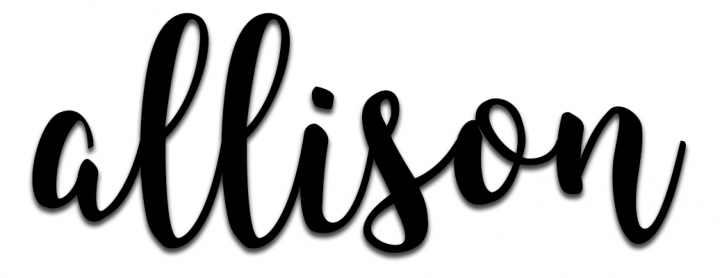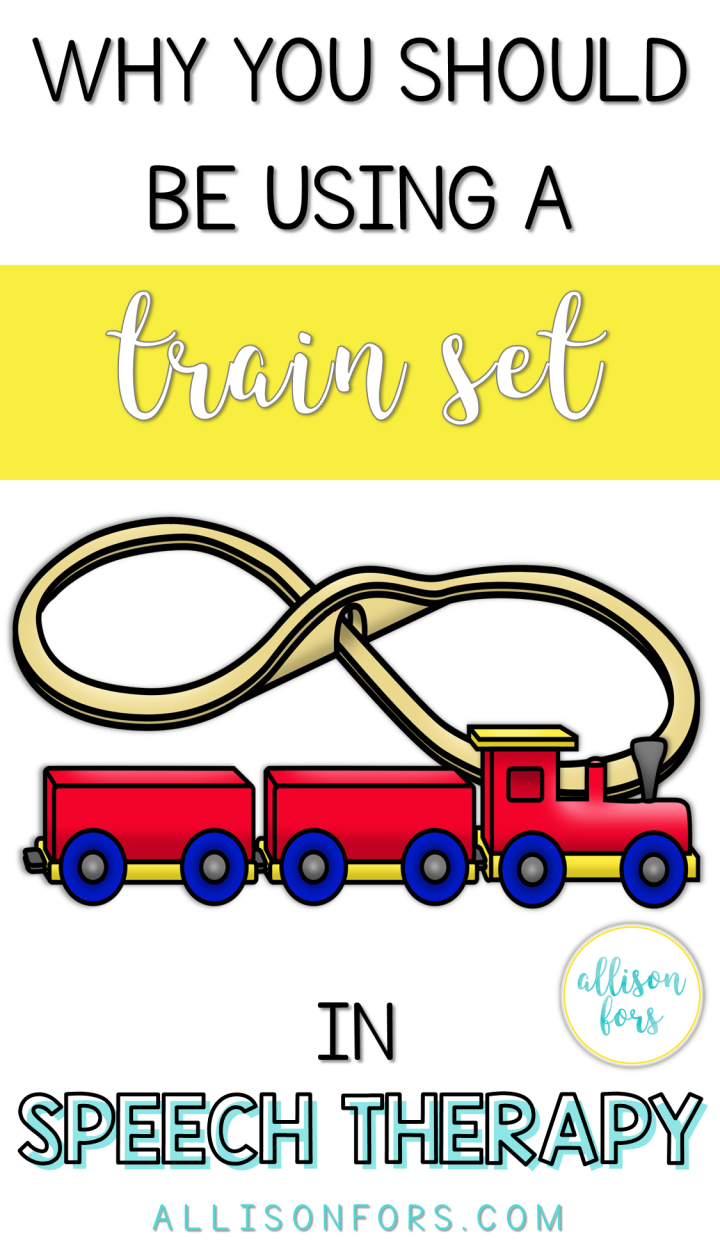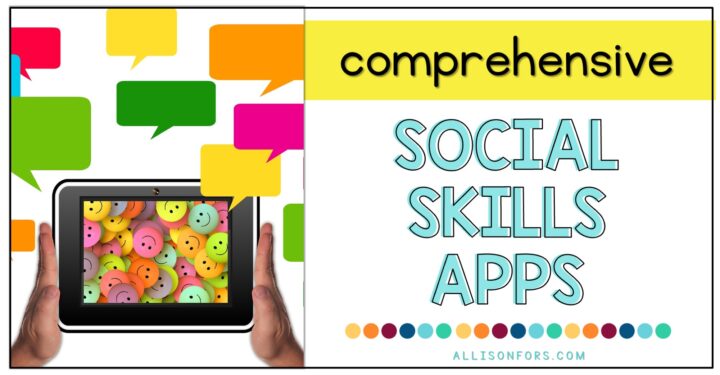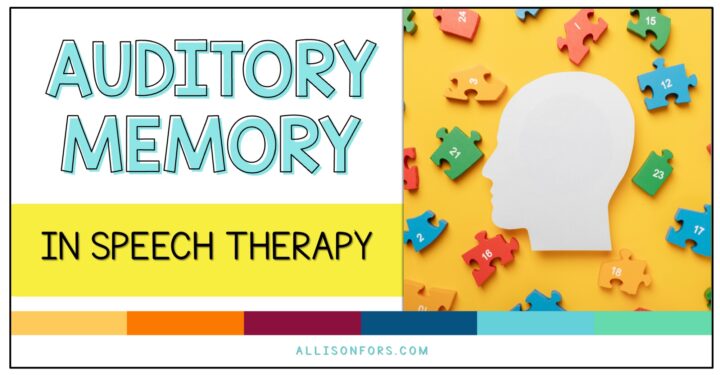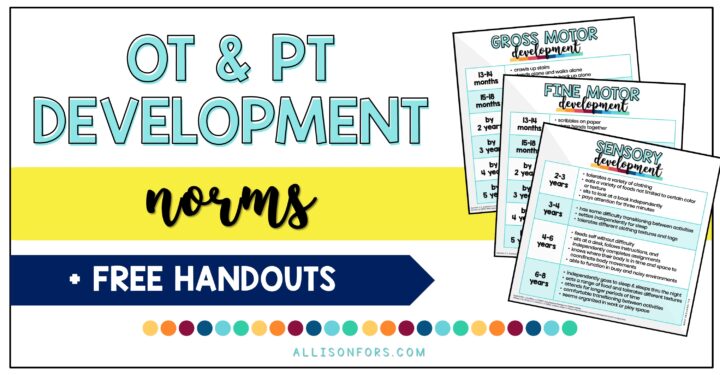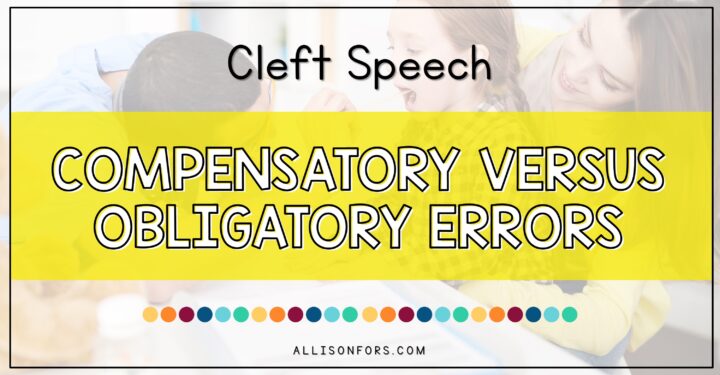
Why You Should Be Using a Train Set in Speech Therapy
A train set is a popular and well-loved toy in speech therapy – for both therapists and kids! I love that I can use trains with a wide age range and to target so many goals. Train sets are a motivating and engaging toy for many students. Since it is an open-ended toy, train sets can easily be modified to fit your needs with one-on-one sessions or mixed groups, articulation or language therapy, and more.
Train sets vary from simple to complex. Some come with drawbridges, trains that you can fit toys inside of, and additional pieces like trees and signs to place along the tracks. The more complex the set, the greater ability you have to incorporate goals. Here are some ideas on how to use a train set in your speech therapy room or classroom!
JOINT ATTENTION
One of the first forms of communication is joint attention or a shared focus on something. You can follow the child’s lead by mirroring their actions and putting your attention on their focus. Model gestures, such as pointing and eye contact to direct their focus and reward it. For example, when they look at a desired item and then make eye contact/point to it.
TURN TAKING
Practice the social skill of taking turns. For example, take turns building the track or pushing the trains down the track. This can be a sharing lesson or working on “my turn” “your turn”.
CAUSE AND EFFECT
A critical part of development is a child realizing their actions have an effect on their environment – this aspect of language development comes before words. Some ideas: knock the train off the track, release the train at the top of the hill, or activate any noise or movement aspect of the train set. These actions are fun, especially ones that are unexpected, like knocking over a person!
REQUESTING
Since playing with trains is motivating, it is a great way to coax a child to make requests. Withhold the train track pieces and trains so the child needs to request via non-verbal communication (signs, pointing) or verbal communication (single word, complete sentence) depending on their ability. I also like to place the items in a clear container so the child can see and request, without the ability to grab it.
VOCABULARY
Work on functional vocabulary, opposites, and descriptors. For example, numbers, colors, “go”, “stop”, “on”, “off”, “up”, “down”, “under”, “over”, “fast”, “slow”. You can incorporate any vocabulary if your trains are big enough to fit mini items inside!
RECEPTIVE IDENTIFICATION
Target identifying nouns, pronouns, verbs, prepositions, descriptors and so much more! “Where is the train?” “Whose train is it?” “Where is the red train?”
POSSESSIVES
Possessives include: my, mine, our(s), your(s), his, hers, its, theirs. During a play period you can allocate certain toy items that belong to you and the child to work on “mine” and “yours”.
PREPOSITIONS
Work on spatial concepts such as, in/out, on/off, in front/behind, next to/between, over/under, up/down.
Download this graphic for free!
PLURALS
Using a train set is a great way to introduce plurals since it is a simple toy without too many components. Also “train”, “car”, and “track” are all regular plural nouns and instead of just drilling plural nouns, your student can build a train! Model “one train car”…”two train cars”, putting an emphasis on the /s/, have the student repeat, then give them both train cars to attach to build the train.
WH QUESTIONS
Work on “who” “what” “when” “where” “why” and “how” questions.
VERBS & VERB TENSES
There are many fun action words to use with a train set. Work on present progressive verbs (pushing) and past tense verbs (pushed) forms as well. Regular verbs: push, stop, wait. Irregular verbs: go, see, build, break, find, give.
MEAN LENGTH UTTERANCES
Incorporate expanding language while playing by modeling an additional 1-2 words based off of what the child says. For example, if the child says “train”, you can model “go train” or “red train” or “I see train”.
SEQUENCING
There are multiple aspects of sequencing you can target. You can have the child follow directions with sequencing terms (first/next/last). You can even work on higher level sequencing by telling a story or demonstrating actions with the train items and then having the child retell or tell what happened in correct order.
FOLLOWING DIRECTIONS
Provide directions for your student to follow. These can be basic 1-step directions: “give me the train” or more complex directions: “put the red train car in the front and the green behind it.” Incorporate descriptors, pronouns, prepositions, and temporal concepts (“Before you push the train, give me the tree.”)
PRETEND PLAY/ROLE PLAY
Imaginary play is critical to development. Model pretend play if the child is not yet demonstrating these skills. You can pretend to be the conductor, pretend to be the train going up the hill or talking to other trains, or pretend to be passengers boarding the train. Incorporate other toys and items – trees, people, stop signs, animals, cars.
PROBLEM SOLVING/PREDICTING
Allow the student to problem solve independently when attempting to put the track pieces together, train cars together, or if a train gets stuck. This allows them to develop important problems solving skills and gives them confidence when they figure problems out on their own. Try predicting outcomes with your older students. What will happen if you stop the track? How far will the train go once the train track stops? How many things can you fit in the train car before it’s too full?
REINFORCER
This is the most common way I use my train set in speech therapy. It is so easy to incorporate it as a reinforcer with any task…drill cards, articulation words, etc. For each trial, the child receives a train track and builds the set track by track.
I hope this gave you some new, fun ideas to implement in your therapy sessions!
Thanks for reading!
Do you use a train set in your therapy or your class? What else do you work on?
You may also be interested in:
Why You Should Be Using a Playhouse
Why You Should Be Using a Play Kitchen
Why You Should Be Using Wind-Up Toys
If you enjoyed this post, please share it!
Follow my blog with Bloglovin
We are a participant in the Amazon Services LLC Associates Program, an affiliate advertising program designed to provide a means for sites to earn advertising fees by advertising and linking to Amazon.com. All opinions are my own.

